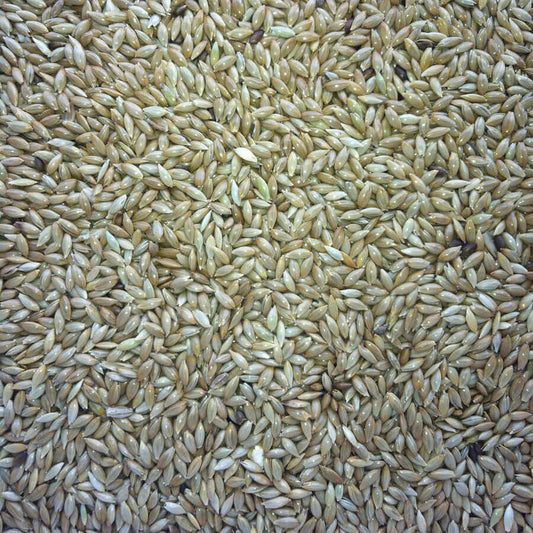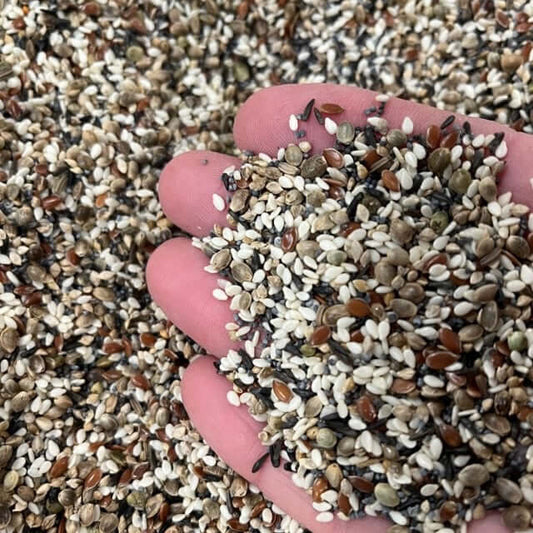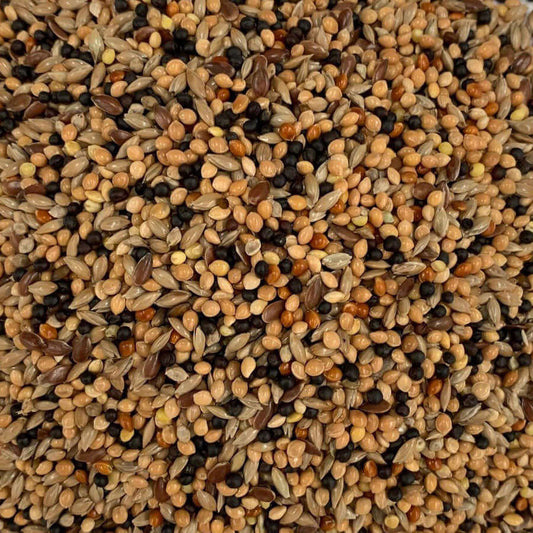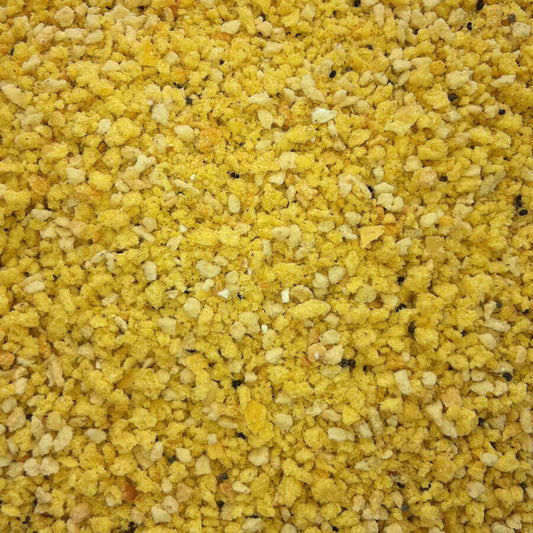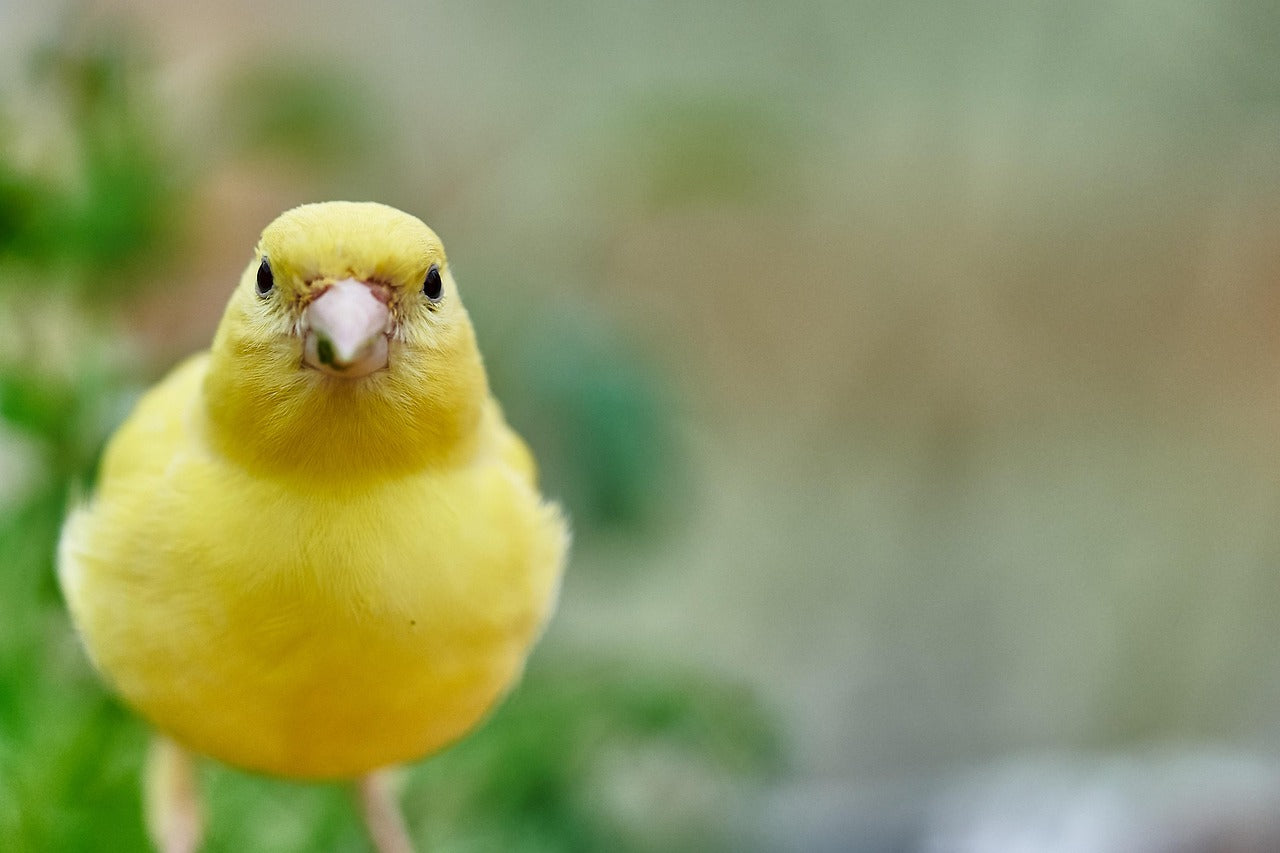
A Basic Guide to Keeping a Pet Canary
Canaries are charming, low-maintenance birds that bring joy to any home with their beautiful singing and vibrant colours. If you’re considering adopting one of these delightful birds, you may have some questions about their care and daily needs. In this guide, we’ll cover everything you need to know about keeping a pet canary, from basic care tips to understanding their behaviour and needs.
How to Take Care of Canaries for Beginners
-
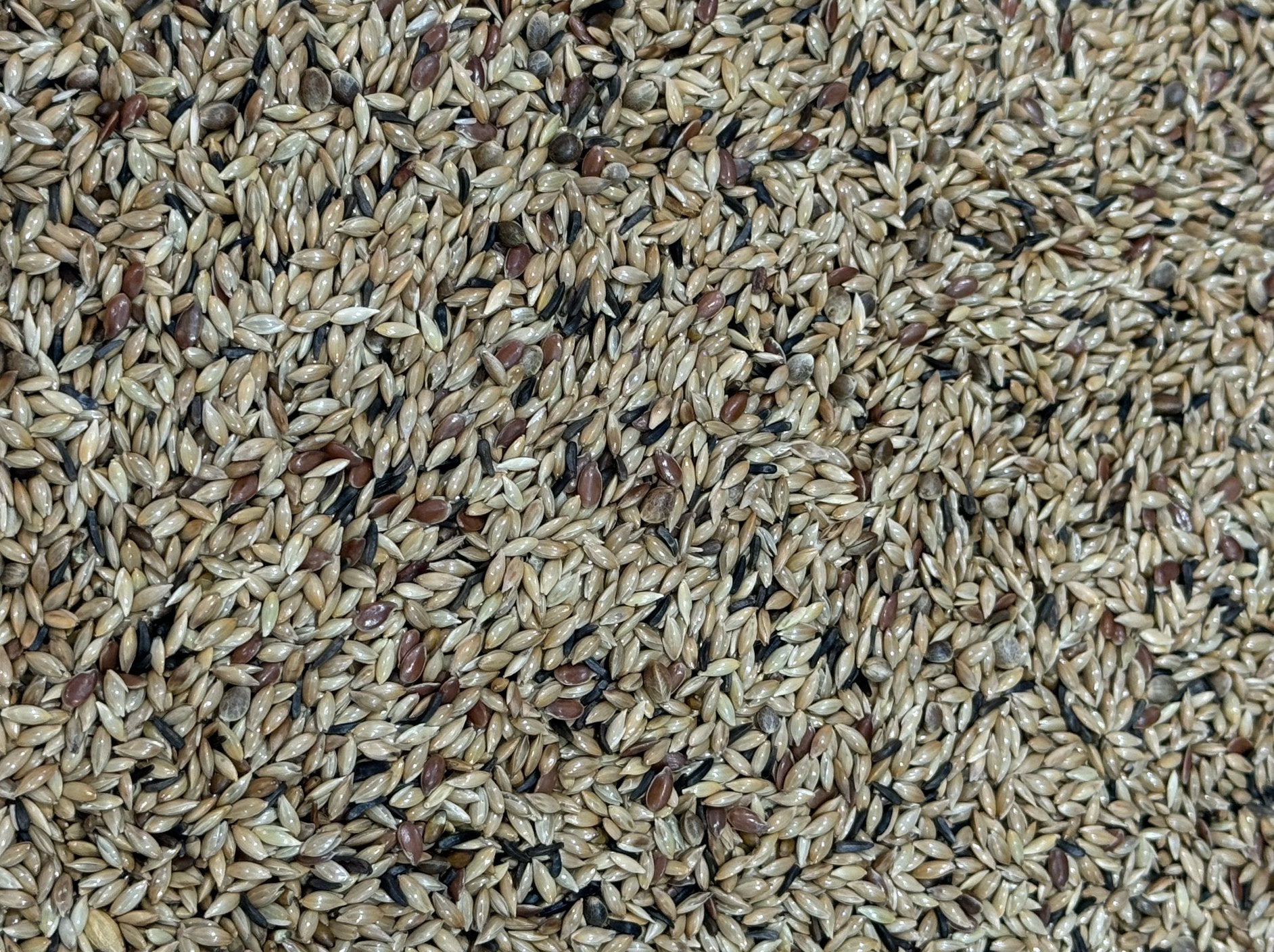
Diet
Canaries thrive on a high-quality seed mix formulated specifically for them. One of the best options available is Haith’s De Luxe Canary Mix which provides balanced nutrition to support their overall well-being.
Supplement their diet with fresh vegetables, fruits, and leafy greens like kale, spinach, or grated carrots. Occasional treats like boiled eggs or cut-up apples provide additional nutrients. -

Fresh Water
Provide clean, fresh water daily for drinking. A separate dish for bathing will also keep their feathers in great condition.
-
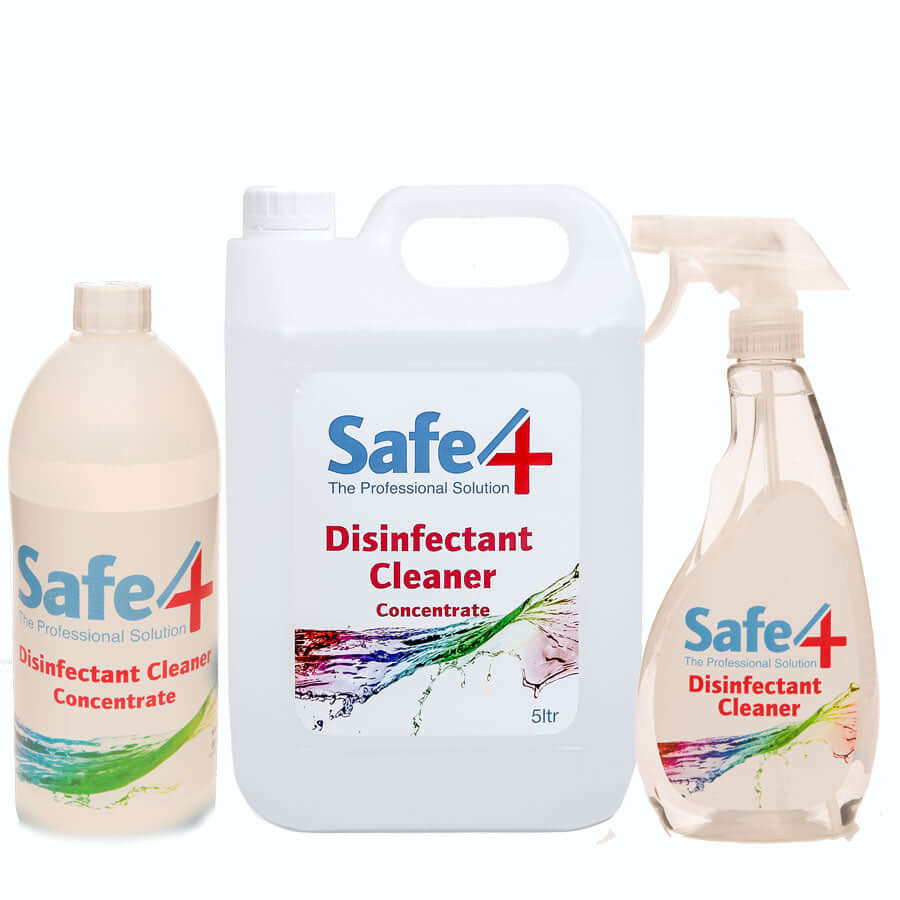
Cage Maintenance
Keep your canary’s home fresh and clean! Replace the liner regularly and wash food and water dishes daily. Remove uneaten fresh food after a few hours to prevent spoilage.
-

Perches, Toys and Treats
Canaries love perches of different thicknesses to keep their feet healthy. Simple toys like swings and mirrors can offer mental stimulation but be careful not to overcrowd their space.
-
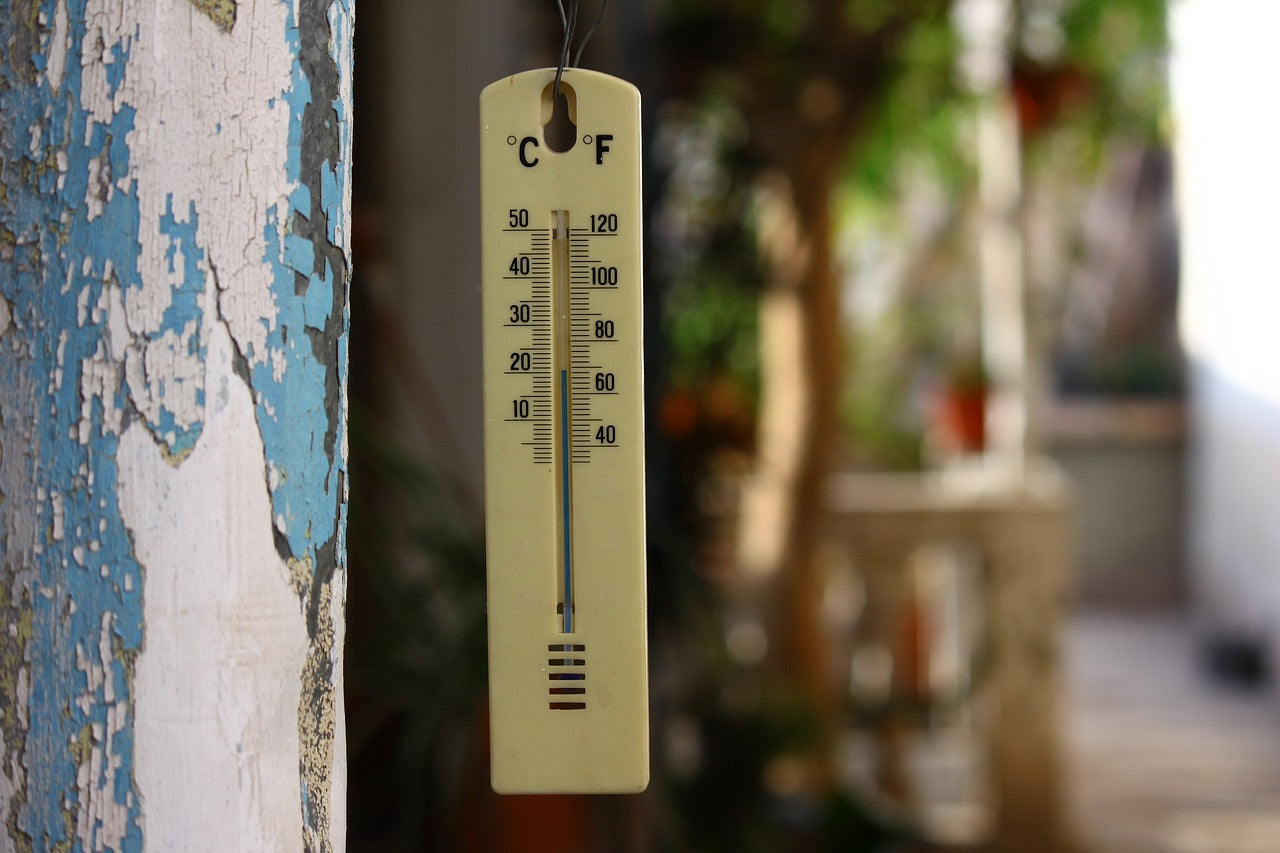
Lighting and Temperature
Canaries need natural light to maintain their health. If natural sunlight isn’t available, a full-spectrum bird light can help. Keep their environment between 60–75°F (15–24°C) and away from drafts or direct heat sources.
-
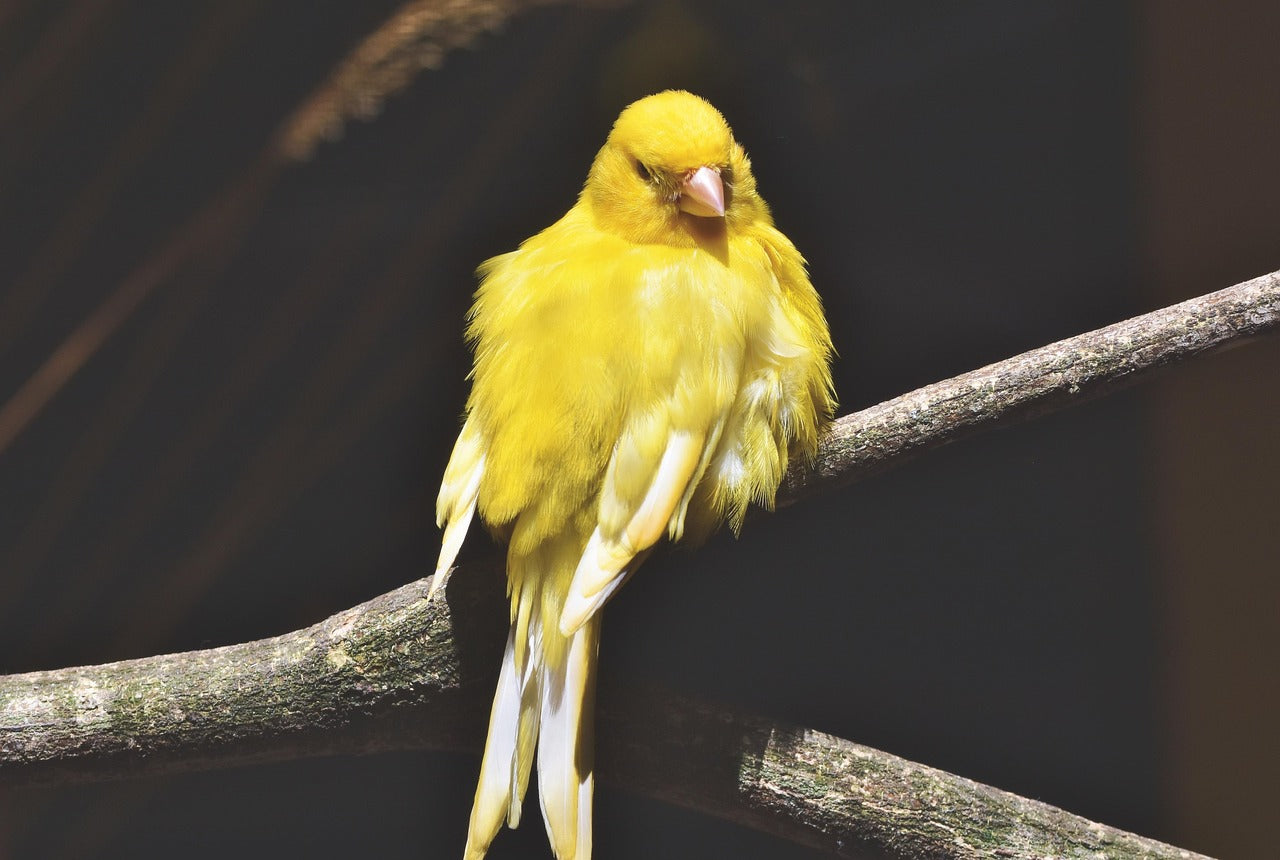
Health Monitoring
Look for signs of fluffed feathers, weakness, drooping wings, changes in amount of drinking water, not eating and poor physical appearance. We would advise regular veterinary checkups and speak to a vet at the first signs of illness.
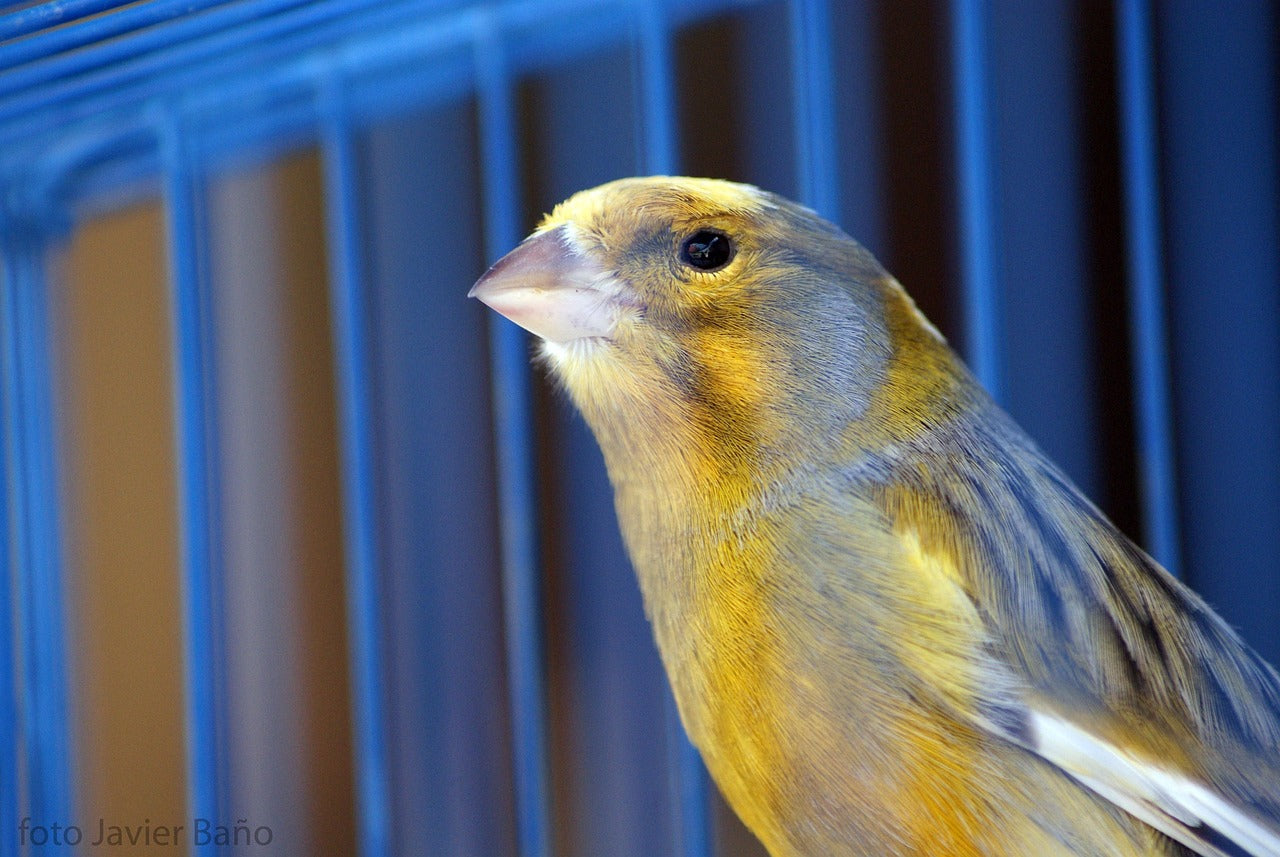
How Often Should I Let My Canary Out of Its Cage?
Canaries don’t need as much out-of-cage time as parrots, but they still enjoy a little freedom now and then. Letting them out in a safe, enclosed space a few times a week allows them to stretch their wings. Before you open the cage door, make sure the room is bird proof:
- Close all windows and doors.
- Remove any toxic plants.
- Turn off ceiling fans and cover reflective surfaces like mirrors.
If your canary is hesitant to come out, don’t worry - some are perfectly content staying in their cage as long as they have space to fly inside.
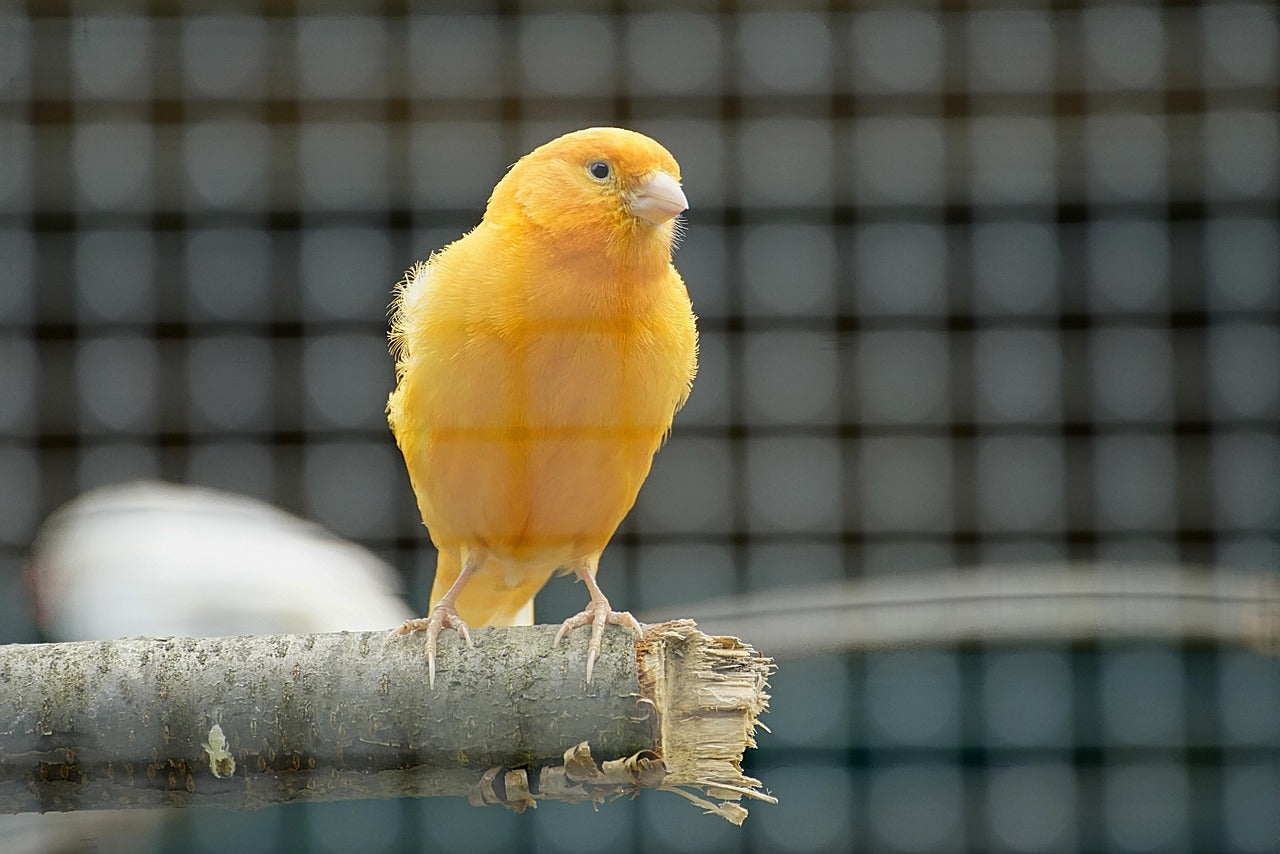
Do Canaries Recognise Their Owners?
Yes, over time, canaries can recognise their owners! While they aren’t as interactive as parrots, they will become familiar with your voice and presence, especially if you speak to them regularly in a calm tone. Some canaries may even start singing when they see you or respond positively when you approach their cage. However, they are independent birds and usually don’t enjoy being handled.
Do Canaries Need Cuttle?
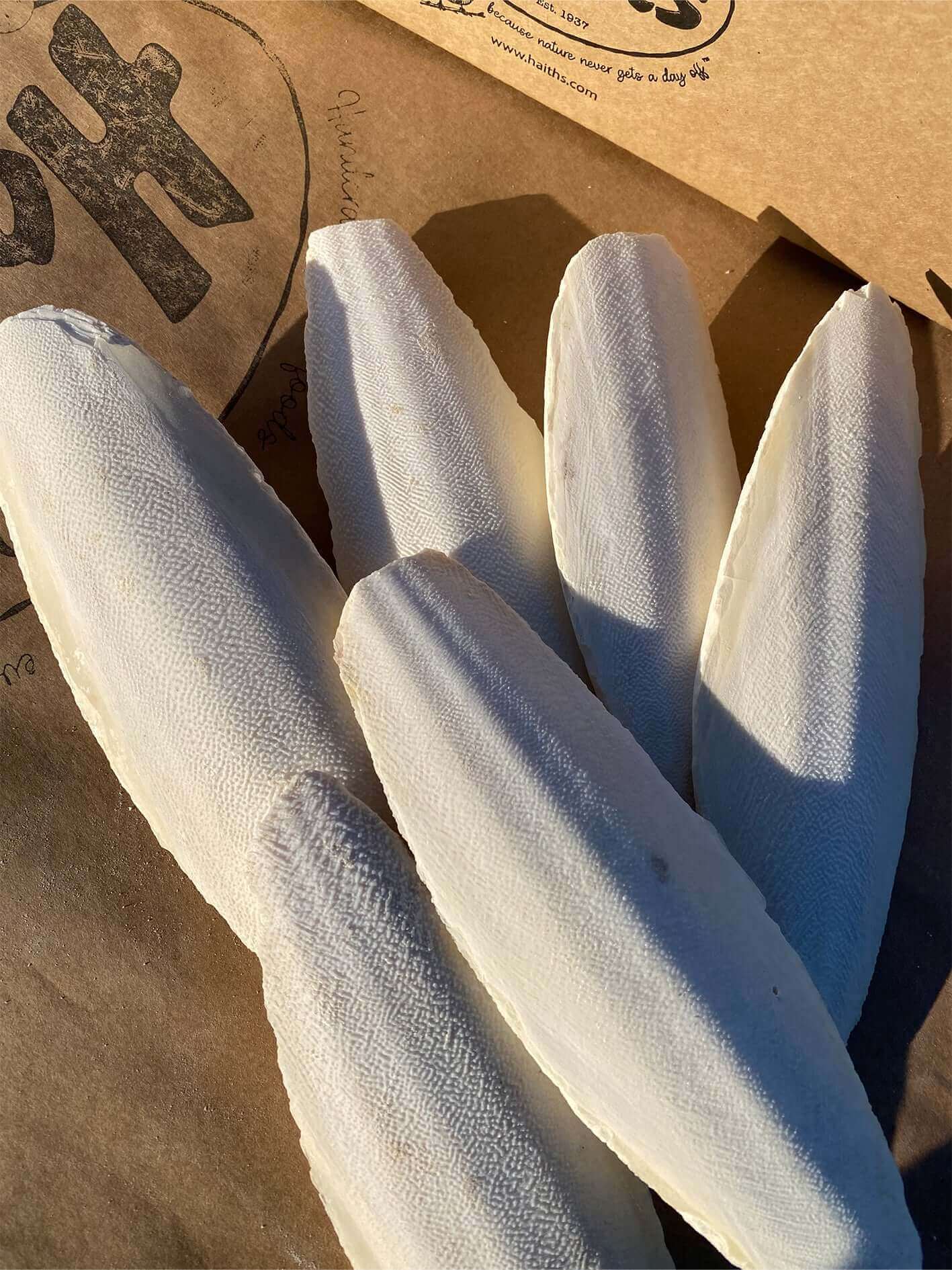
Yes, providing a cuttlebone is essential for a canary’s health. Cuttlebones are a great source of calcium, which helps maintain strong bones and beaks. They also allow canaries to naturally trim their beaks, preventing overgrowth. Simply attach a cuttlebone to the side of the cage, and your canary will instinctively peck at it when needed.
Haith's Canary Seed & Food Collection
Buy the best for your canary
-
De Luxe Canary Seed™
4.91 / 5.0
(74) 74 total reviews
Regular price From £5.99Regular priceUnit price / per£5.99Sale price From £5.99 -
SuperClean Plain Canary Seed
5.0 / 5.0
(16) 16 total reviews
Regular price From £4.13Regular priceUnit price / per£4.13Sale price From £4.13 -
Condition Seed™ for Canaries, Hybrids and British Birds
5.0 / 5.0
(14) 14 total reviews
Regular price From £5.95Regular priceUnit price / per£5.95Sale price From £5.95 -
Condition Seed - No Rape
4.84 / 5.0
(32) 32 total reviews
Regular price From £6.53Regular priceUnit price / per£6.53Sale price From £6.53 -
Kraker Tonic Grains™
5.0 / 5.0
(24) 24 total reviews
Regular price From £6.84Regular priceUnit price / per£6.84Sale price From £6.84 -
Easisoak Seed™ - sprouting seed for canaries, British birds, hybrids & budgerigars
4.93 / 5.0
(28) 28 total reviews
Regular price From £4.77Regular priceUnit price / per£4.77Sale price From £4.77 -
Aviary Mix
4.92 / 5.0
(24) 24 total reviews
Regular price From £4.70Regular priceUnit price / per£4.70Sale price From £4.70 -
Red Factor™ Canary Food for cage & aviary birds
5.0 / 5.0
(1) 1 total reviews
Regular price From £4.78Regular priceUnit price / per£4.78Sale price From £4.78 -
Ready Mixed Colour Food™
5.0 / 5.0
(6) 6 total reviews
Regular price From £4.83Regular priceUnit price / per£4.83Sale price From £4.83 -
Rearing & Conditioning Food™ for Budgie & Canary Breeding and rearing
5.0 / 5.0
(20) 20 total reviews
Regular price From £4.74Regular priceUnit price / per£4.74Sale price From £4.74
1
/
of
10
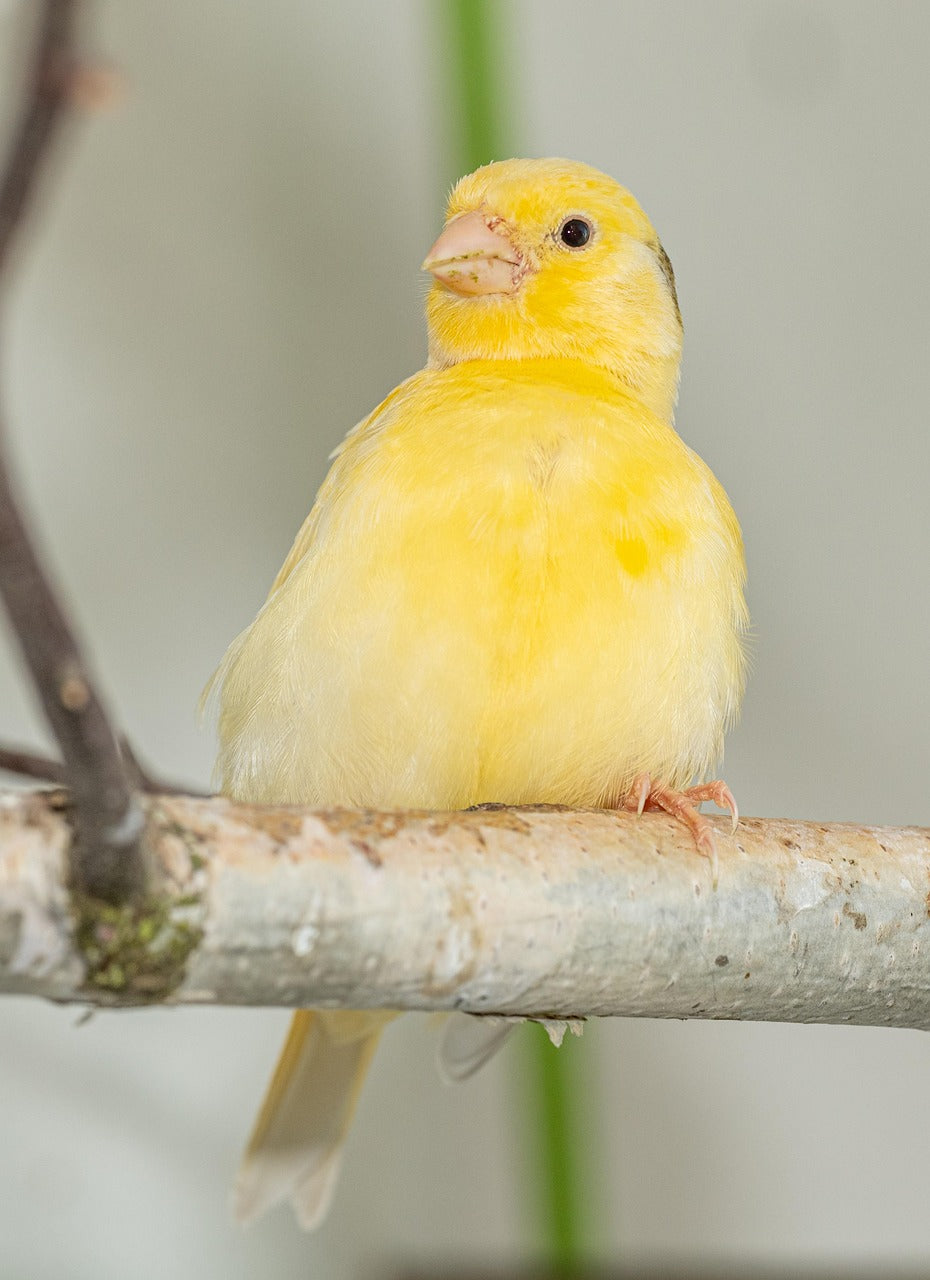
Are Canaries Loud?
Canaries are known for their beautiful songs! Male canaries are the best singers and use their voices to attract mates or express their mood. Their singing is pleasant and melodic rather than disruptive. If you prefer a quieter bird, consider a female canary, as they chirp softly rather than sing. If your canary sings excessively, check their lighting schedule and ensure they have plenty of enrichment. A happy canary sings more, but stress or excessive daylight can cause over-singing.
What Type of Cage Do I Need?
Choosing the right cage is crucial for your canary and their well-being. Here’s what to look for:
Size
A canary’s cage should be at least 24 inches wide, 18 inches deep, and 18 inches tall. They love to fly horizontally, so a wider cage is better than a tall one.
Shape
Avoid round cages, as they do not provide enough space for flying. A rectangular cage allows better movement.
Bar Spacing
The spacing between bars should be no more than ½ inch to prevent escape or injury.
Accessories
Equip the cage with natural wooden perches, food and water dishes, and a small bathing dish. Avoid overcrowding the cage with too many toys or perches - your canary needs space to fly freely.
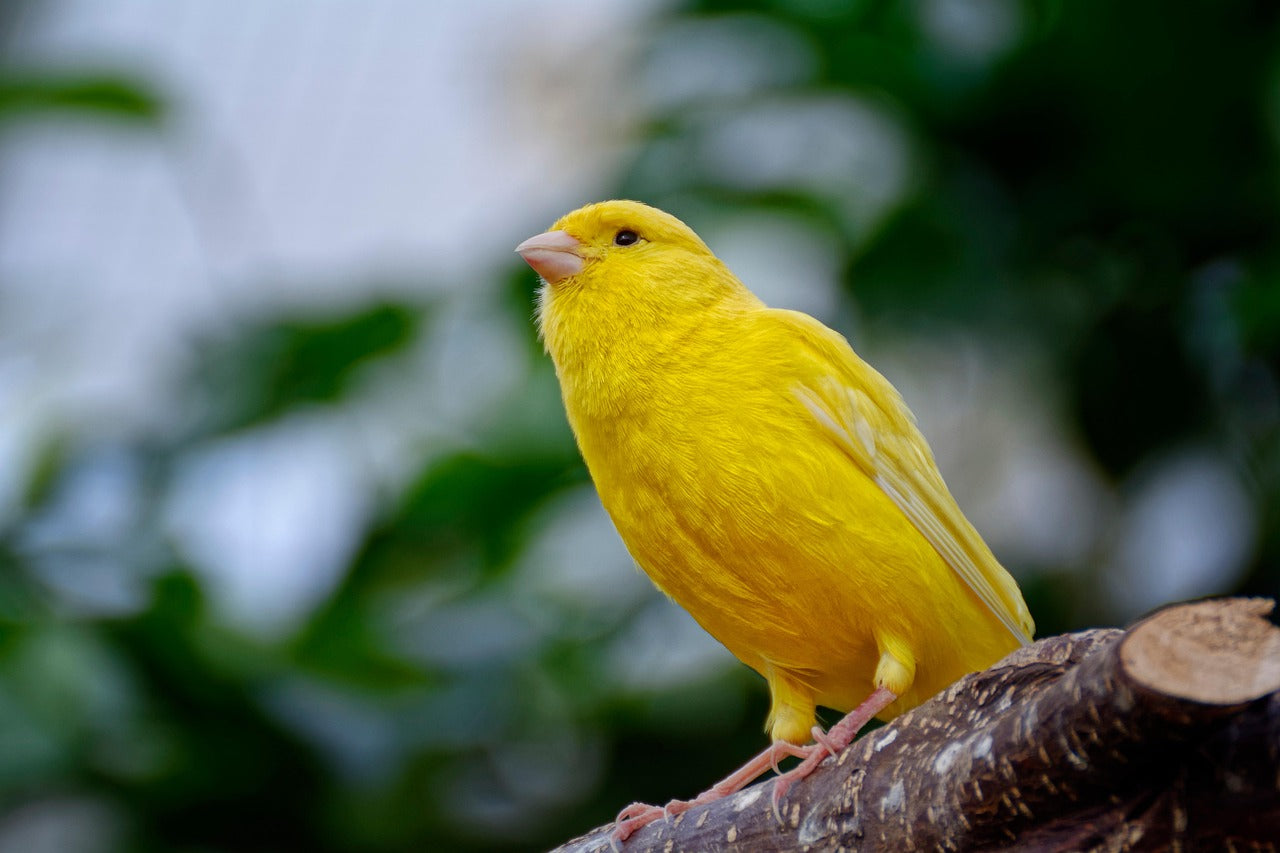
Keeping a pet canary is a wonderful and rewarding experience. Their cheerful songs and independent nature make them a delightful addition to any home. By providing a well-maintained cage, a nutritious diet and plenty of love, your canary will thrive for many years to come. Whether you’re a first-time bird owner or an experienced pet parent, following these simple guidelines will ensure your canary stays happy and healthy. Enjoy the company of your pet and happy bird-keeping!








